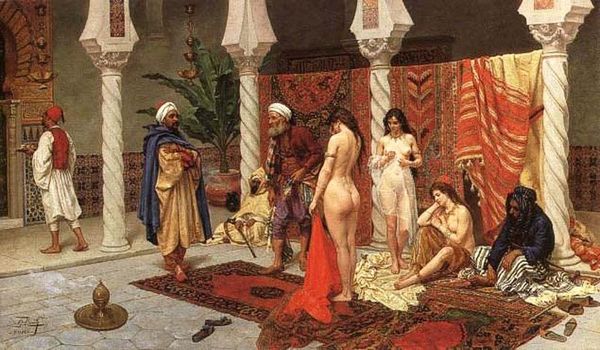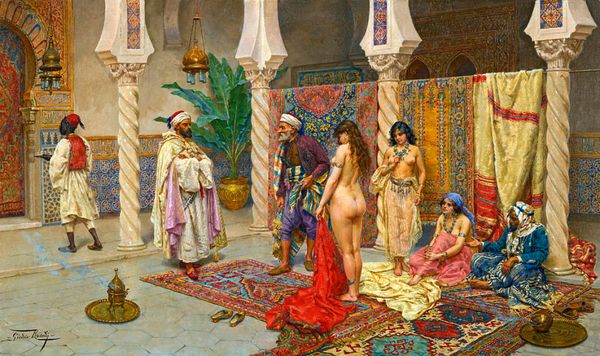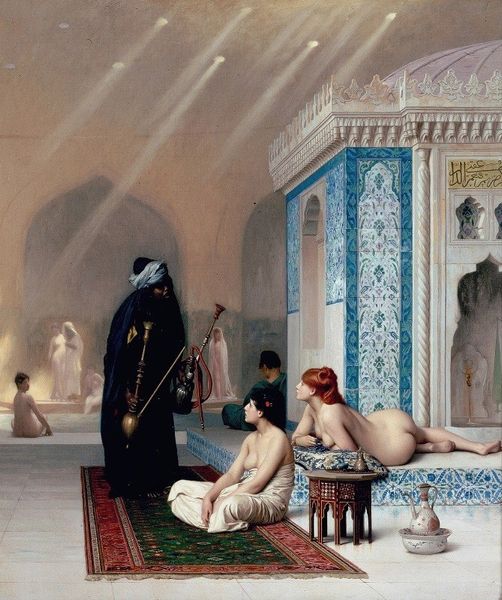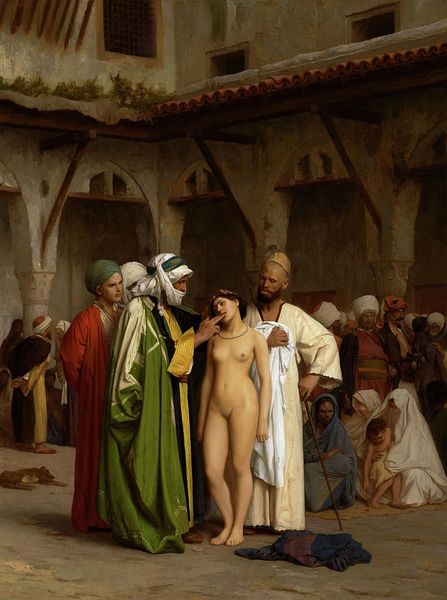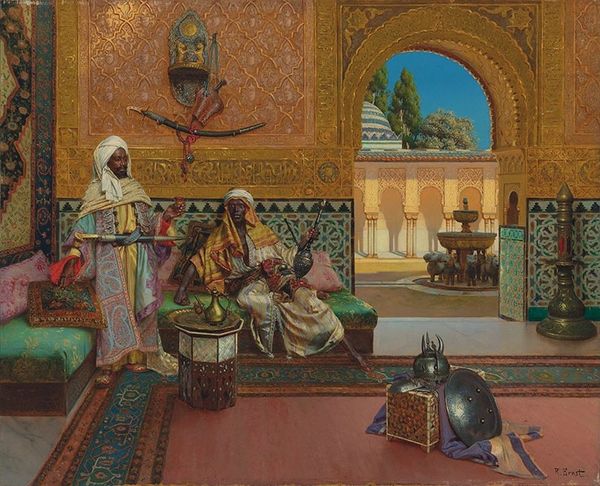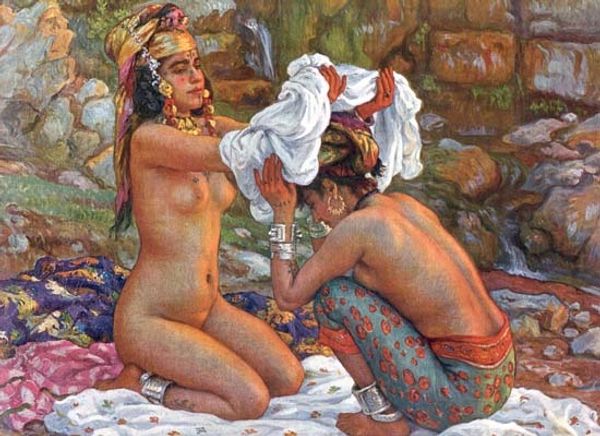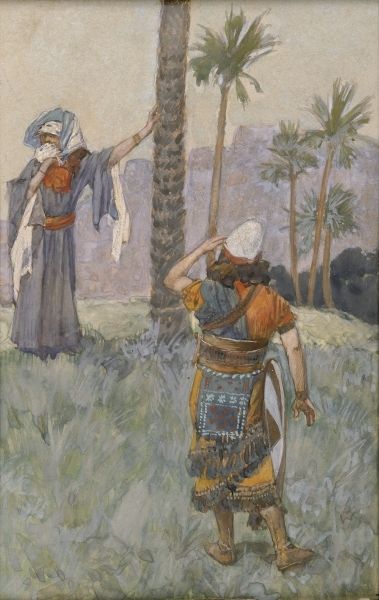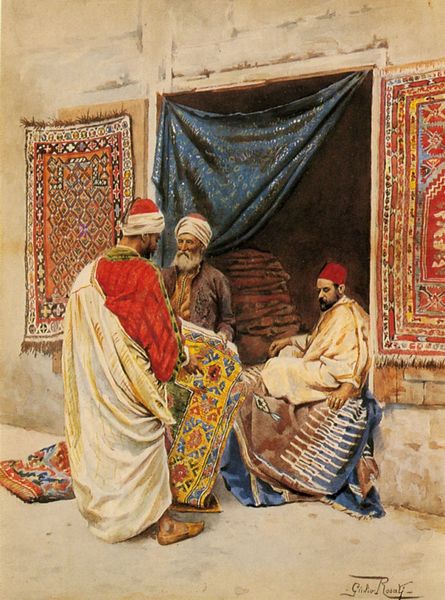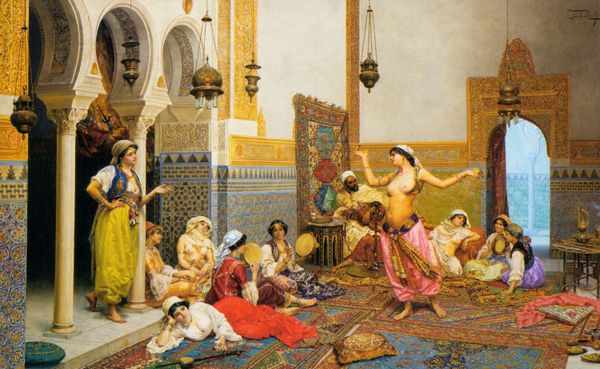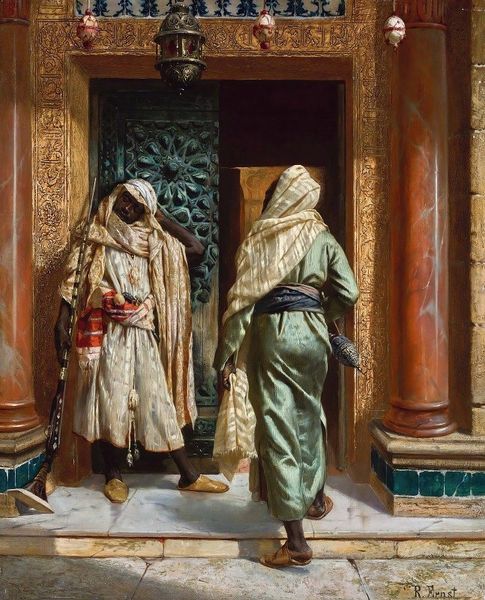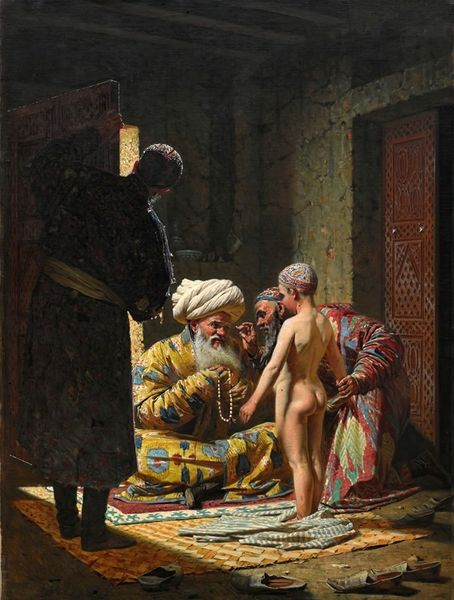
painting, oil-paint
#
portrait
#
painting
#
oil-paint
#
figuration
#
oil painting
#
orientalism
#
genre-painting
#
history-painting
#
nude
#
portrait art
Copyright: Public domain
Editor: Giulio Rosati's oil painting, "A New Arrival", is quite striking. The composition, with the nude figure presented to the two men, feels charged and a bit...uncomfortable. How do you interpret this work? Curator: The iconography here pulls heavily from the Orientalist fantasies prevalent in 19th-century European art. Observe the symbols: the opulent rugs, the idealized figures, the gaze directed towards the central woman. It speaks of power dynamics and the objectification that fueled much of the West's perception of the "Orient." Editor: So, the symbols aren't necessarily literal representations, but carry a weight of cultural baggage? Curator: Precisely. Rosati isn't simply depicting a scene, he’s engaging with a visual language loaded with centuries of projection and colonial desire. Even the specific items of clothing and jewelry would have carried coded meanings for his original audience, referencing status and perceived exoticism. Consider how the light focuses on the figures versus the more shadowed background. Editor: I see what you mean. The woman seems to represent the East. Curator: Or rather, the European idea of the East: a place of mystery, beauty, and perhaps, vulnerability. Her being nude enforces these themes. Are there ways the woman’s posture reminds you of any works you may have studied from earlier Western traditions? Editor: Interesting thought. Now I can see an idealized “Venus” that reflects back to this artwork. Curator: Just as those Orientalist paintings of harems or slave markets reveal more about the West than the East. So much of art is embedded in complex cultural stories, revealing those subconscious connections we hold dear. Editor: Thanks, I am now questioning what this arrival really represents!
Comments
No comments
Be the first to comment and join the conversation on the ultimate creative platform.
